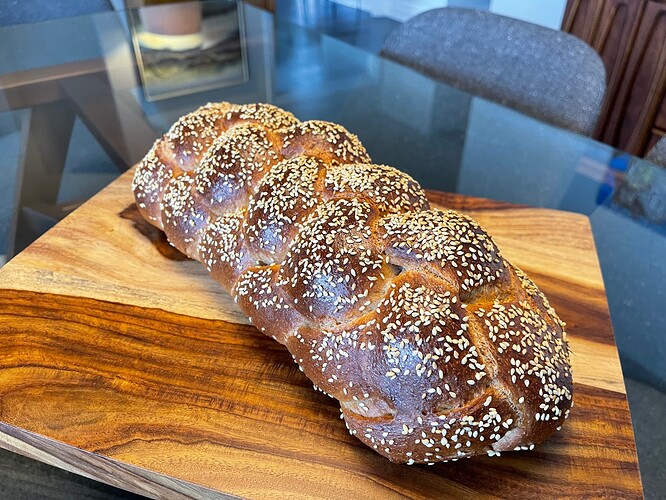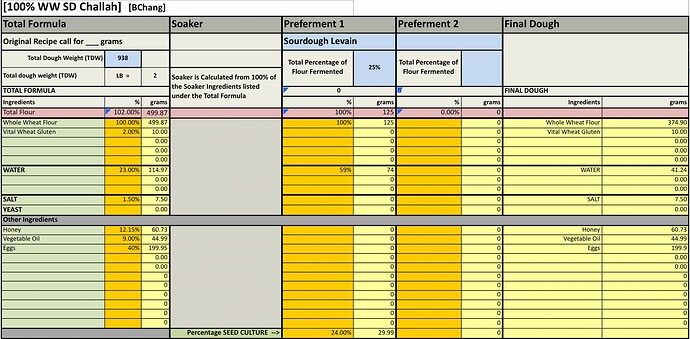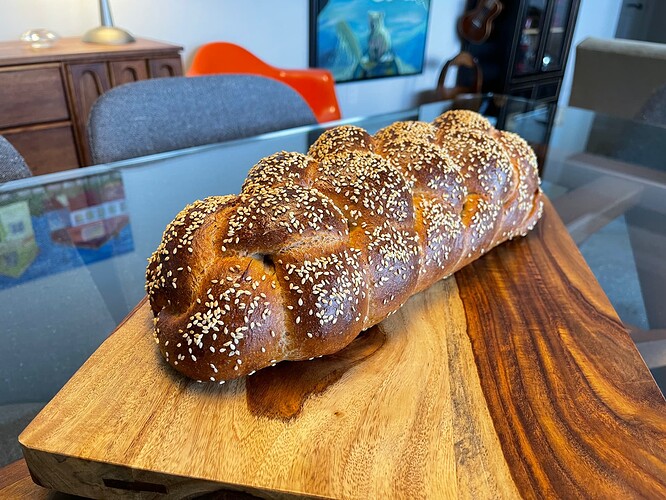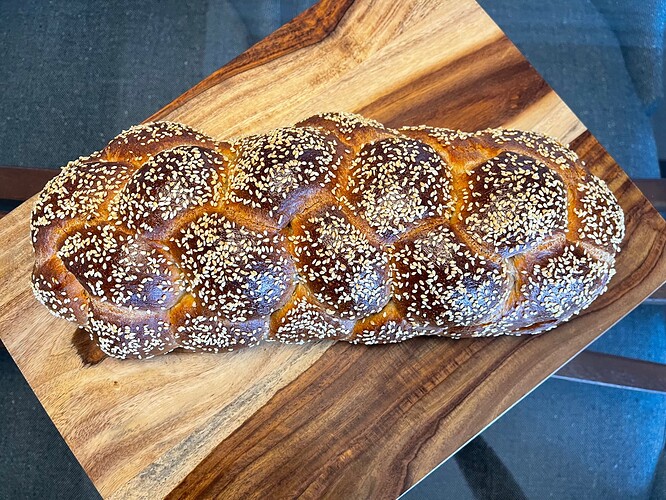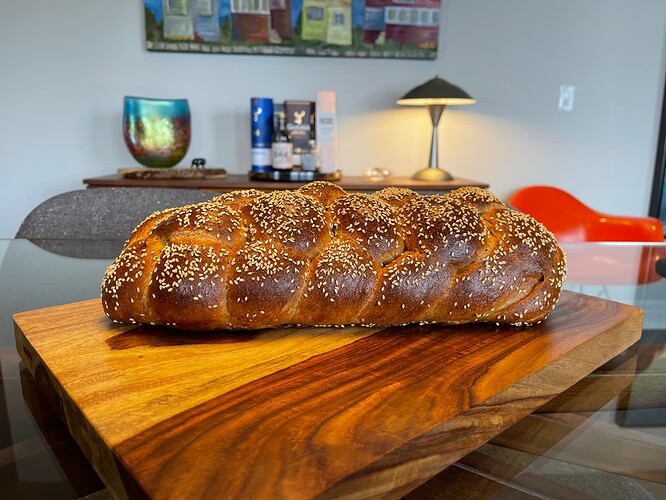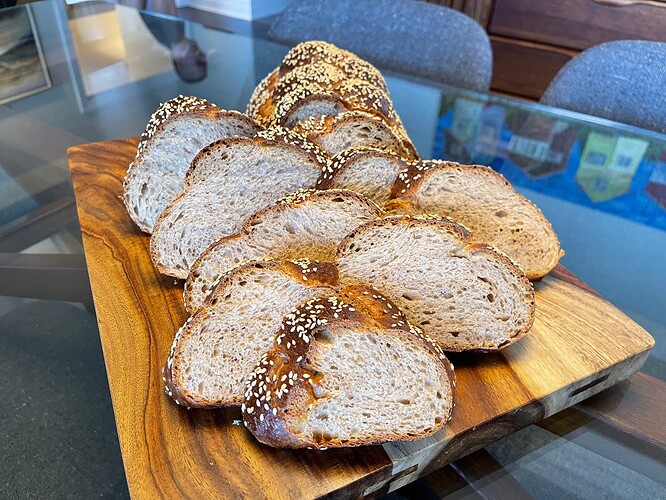Building on my successful 50% WW SD Challah I baked last week I decided to bake a 100% WW version. I think based on the appearance that I was patient enough with the final proof and didn’t under ferment it this time. I didn’t want to take a chance with weak gluten so I did add VWG to this one since there is no strong flour. I wanted to ensure that the shape of the each strand held its own and I think they did.
Procedures
- The night before baking, mix the starter and ferment it at 76-78°F for 8-12 hours.
- In the morning, in a large bowl or the bowl of a stand mixer, add the starter then mix in the 4 eggs, salt and honey and mix until completely combined.
- Mix in all the flour until it forms a shaggy mass.
- Knead the dough on the bench or in a stand mixer until it is smooth and there is moderate gluten development. Add the water via bassinage the water to achieve the desired consistency. The dough should be quite firm. Gradually add the oil, the dough may break down, wait until it comes back together and before you add more. Mix until gluten is well developed.
- Transfer the dough to a lightly oiled bowl and cover it tightly. Ferment for about 2-2.5 hours. At 82°F it rose 20-25%
- To make one loaf, divide the dough into two equal portions, and divide each portion into the number of pieces needed for the type of braiding you plan to do, so divide each by 3 to make 1 six strand braided loaf.
- Form each piece into a ball and allow them to rest, covered, for 10-20 minutes to relax the gluten.
- Form each piece into a strand about 14” long. (I like Glezer’s technique for this. On an un-floured board, flatten each piece with the palm of your hand. Using a rolling pin, roll out each piece to about ¼ inch thickness. Then roll up each piece into a tight tube. Using the palms of your hands, lengthen each piece by rolling each tube back and forth on the bench with light pressure. Start with your hands together in the middle of the tube and, as you roll it, move your hands gradually outward. Taper the ends of the tube by rotating your wrists slightly so that the thumb side of your hand is slightly elevated, as you near the ends of the tube.). You can consider rolling each rope of dough in two different types of seeds at this point for a decorative effect, or only a few of the strands.
- Braid the loaves. Braiding somewhat loosely, not too tight.
- Place loaf on parchment paper on a sheet pan. Brush with egg wash. Cover well with plastic wrap (brush with oil so it doesn’t stick to the dough) or place the pans in a food grade plastic bag, and proof at room temperature until the loaves have tripled in volume. About 4-6 hours.
- If it’s almost tripled and when poked the dough only springs back a little, preheat the oven to 180°C/350°F. Gauge the dough again. Stick a finger lightly in the dough. If it makes an indentation that doesn’t spring back, the dough is ready to be baked. If not, wait a bit more.
- Pre-heat the oven to 350ºF with the rack in the upper third of the oven about 30 mins before final proof is complete.
- Brush each loaf with an egg lightly beaten with a pinch of salt.
- Optionally, sprinkle the loaves with sesame seeds and/or poppy seeds.
- Bake until done – 30-40 minutes rotating half way. If baking as one large loaf may take a bit longer, bake until sounds hollow or reaches 190ºF in the middle.
- Cool completely before slicing.
